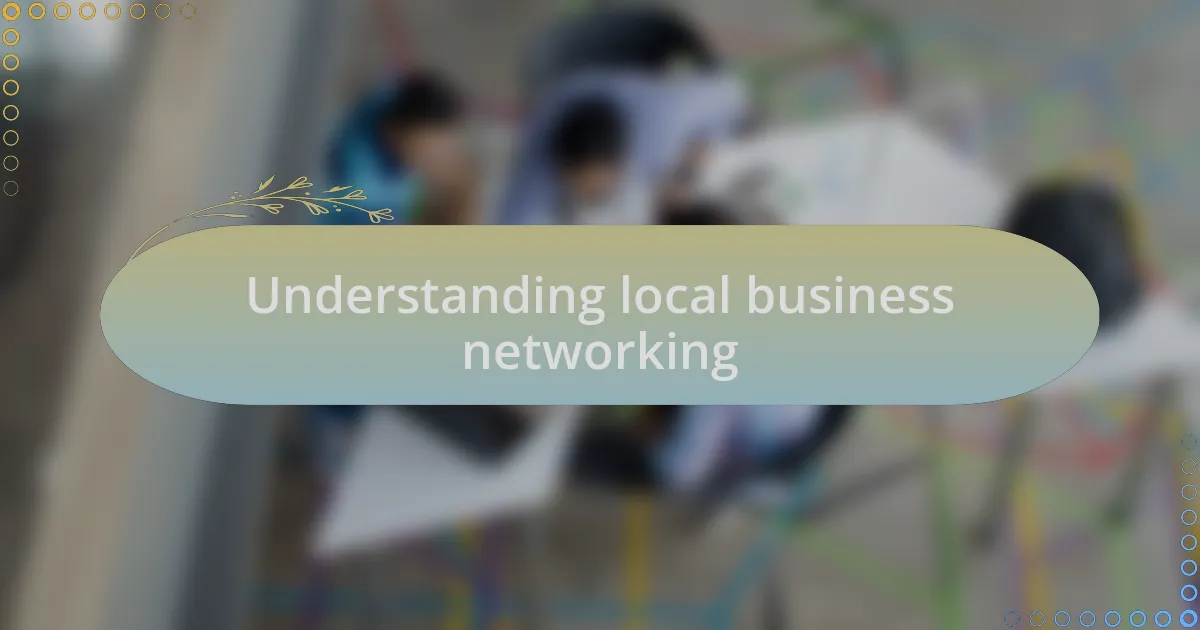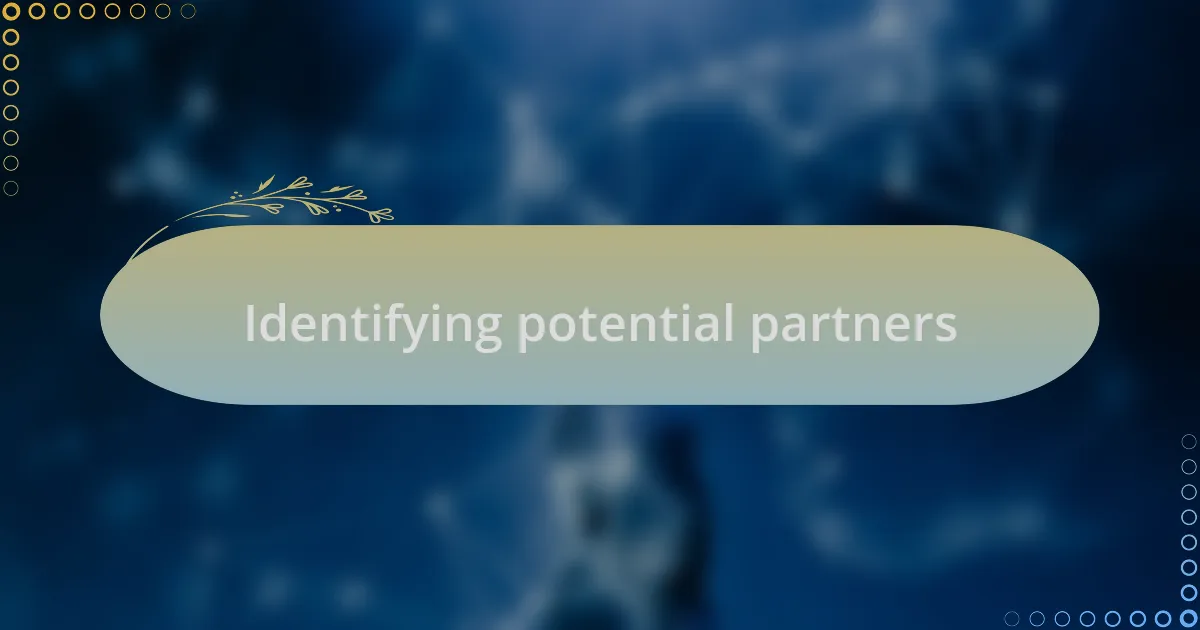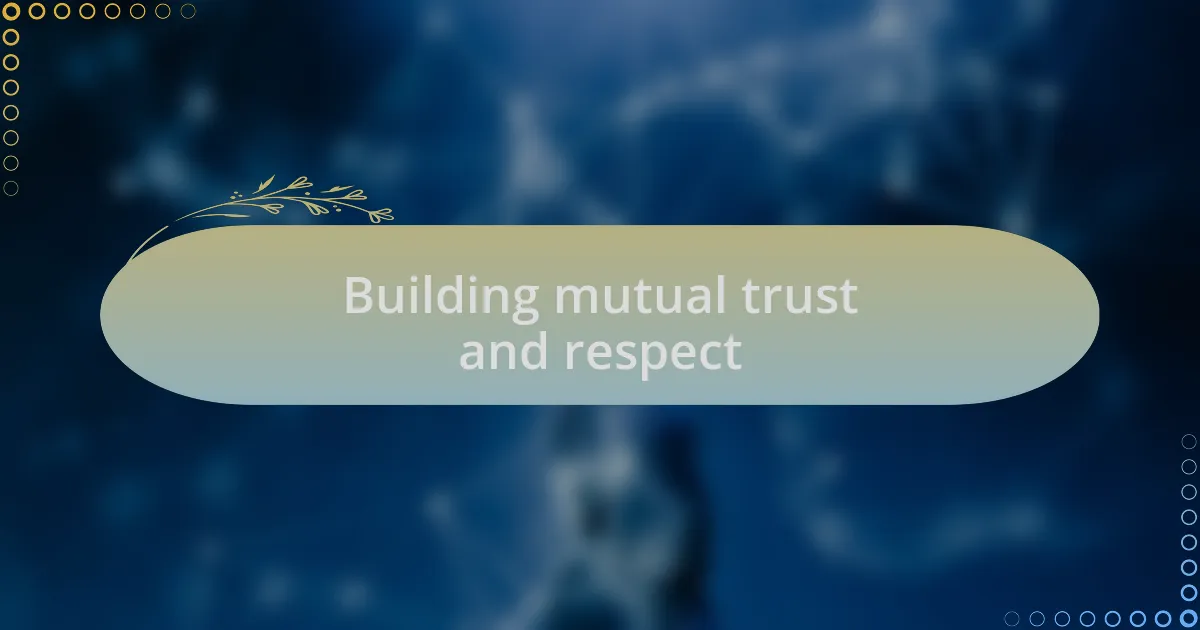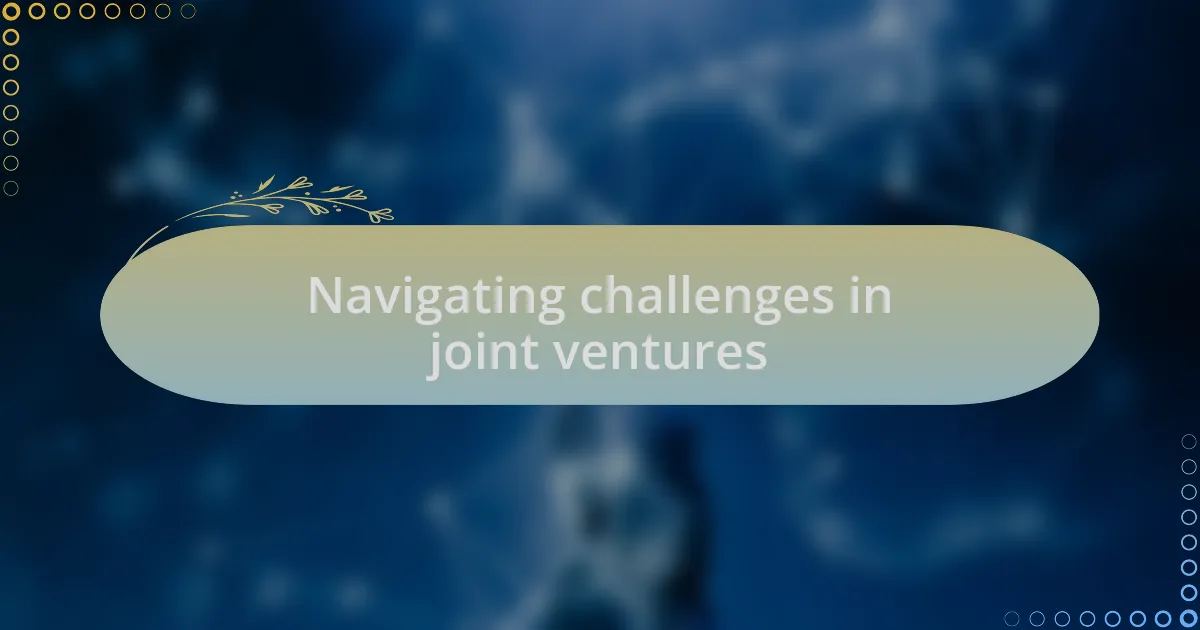Key takeaways:
- Local business networking emphasizes authentic relationships, fostering community and collaboration among entrepreneurs.
- Building trust through face-to-face interactions enhances partnerships and opens doors to new opportunities.
- Successful collaborations require effective communication, active listening, and mutual respect to navigate challenges.
- Approaching potential partners with personalized messages and follow-ups strengthens connections and fosters long-term relationships.

Understanding local business networking
Local business networking is more than just a business strategy; it’s about building authentic relationships with others in your community. I remember attending my first local networking event feeling a mix of excitement and nervousness. Was anyone going to connect with me? To my surprise, I discovered that almost everyone shared similar fears and aspirations, which laid the groundwork for genuine partnerships.
What intrigues me about local networking is the sense of community it fosters. When I collaborate with other local entrepreneurs, I see how our unique strengths complement each other. Have you ever experienced that “aha” moment when a fellow business owner shares their insight, and it suddenly feels like a lightbulb has gone off? Those moments are what make networking not just valuable, but also deeply enriching on a personal level.
Engaging with local businesses provides opportunities that you might not find in broader networks. For instance, when I approached a neighboring café to collaborate on a community event, it led to unexpected support and a surge in customers for both of us. This is the essence of local networking—leveraging our shared resources and passions to create something greater together.

Benefits of local business networking
Building relationships through local business networking offers a treasure trove of benefits. I remember a time when I found myself sitting at a community roundtable, sharing ideas with other business owners over coffee. It was enlightening to hear different perspectives on common challenges; I realized that collaboration could turn struggles into shared success stories. Who doesn’t want to solve a problem faster with a group of dedicated peers?
One of the standout advantages of local networking is the trust factor. When you interact face-to-face with fellow entrepreneurs, you cultivate a level of trust that’s tougher to achieve online. I once partnered with a local artist for a joint promotion, which blossomed into a wonderful friendship. This mutual understanding built a rapport that extended beyond business, transforming a transaction into a genuine collaboration.
Furthermore, local networking opens doors to new markets and opportunities. For example, after meeting a local fitness instructor at an event, we decided to combine our resources for a community wellness program. The turnout was incredible, and we both benefited from the cross-promotion. Can you see how tapping into each other’s networks amplifies reach and impact? It’s moments like these that illustrate the profound advantages of nurturing relationships within your community.

Identifying potential partners
Identifying potential partners requires a keen eye and an open mind. I vividly recall stepping into a local business expo, my curiosity leading me to various stalls. As I walked around, I noticed a graphic designer who seemed to share my vision for community engagement. Our brief chat revealed not only alignment in values but a potential synergy that sparked my interest in collaborating. Have you ever felt that instant click with someone? That’s what I experienced.
It’s essential to consider complementary skills and resources when identifying potential partners. During a brainstorming session with a fellow entrepreneur, we explored each other’s strengths. My focus on digital marketing meshed perfectly with their expertise in product development. This meeting of minds made it clear that we could create something truly special together. How often do you take the time to evaluate who might balance your weaknesses?
Another approach I’ve found effective is engaging in local community events and networking groups. I remember attending a charity fundraiser, where I met a local chef who passionately discussed the importance of fresh ingredients. Our conversation led to brainstorming ideas for a collaborative cooking class series. Not only did it align with our business goals, but it also ignited a personal connection over our shared love for food. Have you explored the possibilities waiting for you at local gatherings? There’s a wealth of opportunity just around the corner.

Approaching potential partners
Once you’ve identified potential partners, the next step is to approach them with confidence. I remember reaching out to a local fitness instructor after participating in one of her classes. I felt an instant connection and believed our businesses could work well together. When I expressed my admiration for her work and shared ideas for collaboration, she was not only receptive but excited about the possibilities. How do you convey your genuine interest when reaching out to someone you’ve just met?
Crafting the right message is crucial, especially when initiating contact. Instead of a generic email, I decided to personalize my outreach and mention a specific project idea that aligned with both our missions. This personal touch sparked her interest and began an engaging dialogue. Have you thought about how your unique perspective could capture a potential partner’s attention?
Lastly, follow-up is key in building relationships. After our initial conversation, I made it a point to check in and share additional resources that might interest her. It’s during these informal exchanges that deeper alliances form. Have you considered how nurturing these connections over time can lead to fruitful collaborations?

Building mutual trust and respect
Building mutual trust and respect is at the heart of every successful joint venture. I recall a meeting with a local catering business owner, where we spent the first half of our discussion simply getting to know each other. Through sharing our experiences, I noticed how vulnerability can create a safe space. Have you ever felt the magic that happens when you reveal a little of yourself and the other person opens up in response?
As I navigated our conversations, I focused on active listening. I made it a point to acknowledge her concerns about the catering industry, validating her insights. This practice reinforced her trust in me—not just as a potential partner but as someone genuinely invested in our shared goals. How often do we truly listen in a collaborative context, and can you recall a moment when that transformed a relationship?
Mutual respect flourishes when both parties feel valued. During our negotiations, I made sure to highlight her strengths and contributions, reassuring her that this venture would be a partnership where both of us shine. Reflecting on it now, I realize that recognizing each other’s expertise not only builds respect but also enhances the collaboration process. Isn’t it fascinating how appreciation can elevate not just individuals, but the entire partnership?

Navigating challenges in joint ventures
Navigating challenges in joint ventures often entails confronting differing expectations. I remember a moment in my partnership where our visions for marketing strategies diverged radically. The tension was palpable, but instead of shying away from the clash, we decided to address it head-on in a brainstorming session. Have you ever experienced a disagreement that turned into a breakthrough? That discussion allowed us to harmonize our ideas and ultimately strengthened our collaborative approach.
Another significant hurdle emerged during the financial planning phase. As we delved into budgets and projections, my partner and I discovered discrepancies in how we viewed investment risks. At first, this felt daunting, like standing on the edge of a rocky cliff. But by sharing our underlying motivations—my desire for a steady return and her eagerness to pursue innovative ventures—we crafted a balanced plan that satisfied both our instincts. Have you found common ground by sharing your fears and aspirations with a partner?
Communication emerges as a cornerstone in overcoming these challenges. I recall a miscommunication that almost derailed a critical timeline for our venture’s launch. Instead of pointing fingers, we took the time to reflect and clarify our roles and deadlines. The relief I felt during that honest conversation reminded me of the importance of transparency; it’s such a small act, yet it has the power to avert potential crises. How often do you pause to ensure everyone is on the same page?